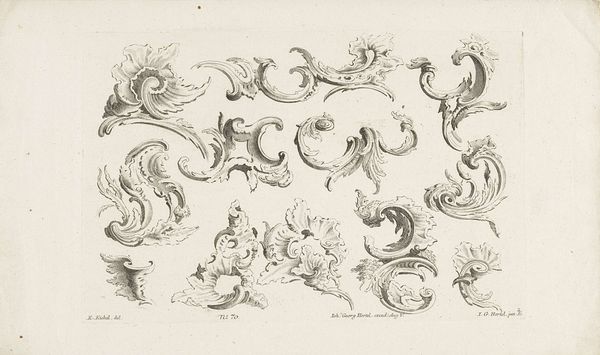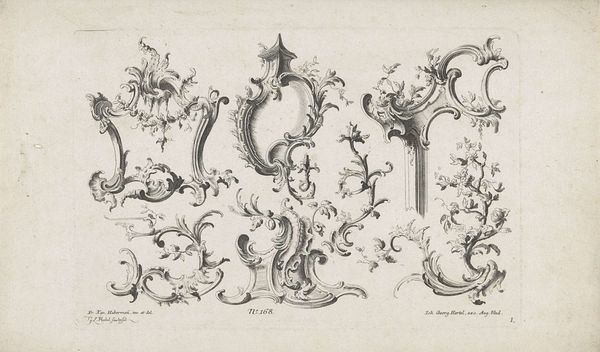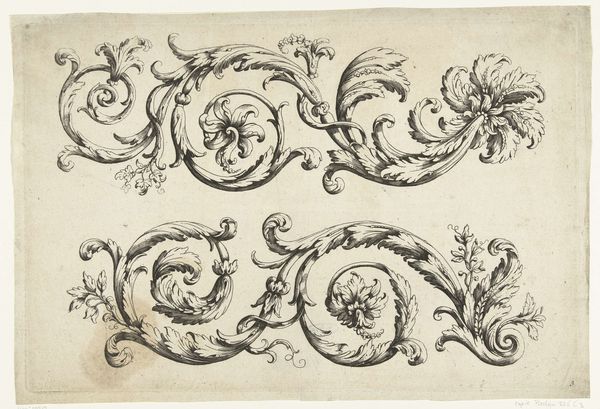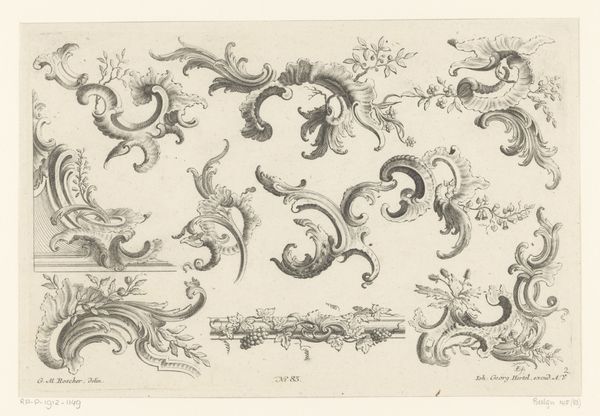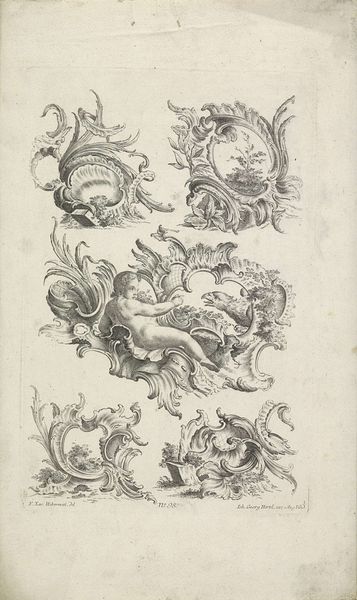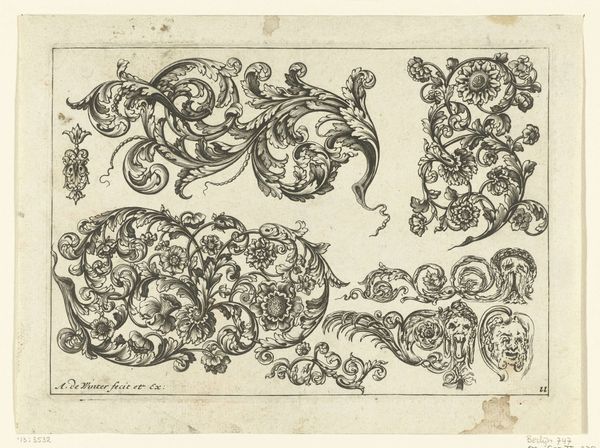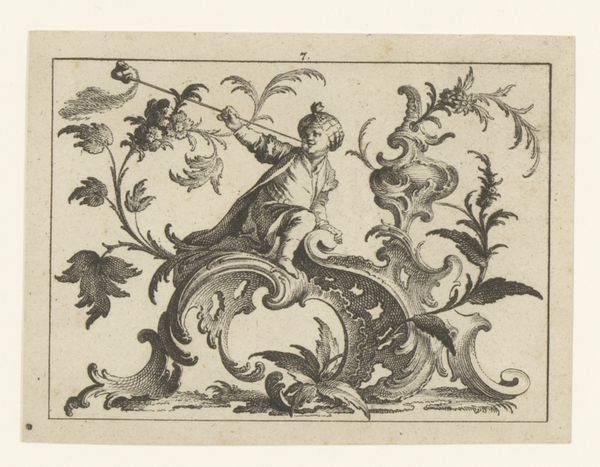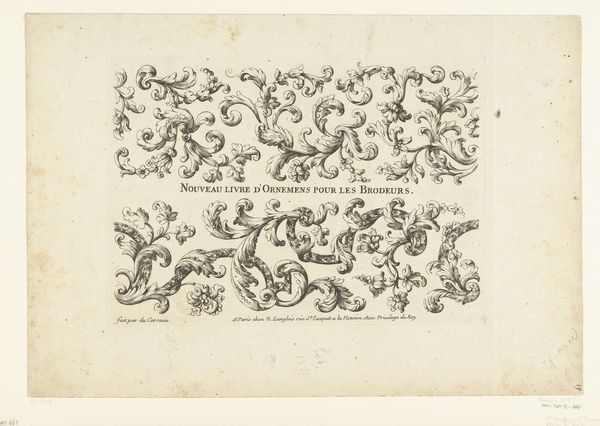
drawing, ornament, ink, pen
#
drawing
#
ornament
#
baroque
#
pen sketch
#
form
#
ink
#
line
#
pen
#
decorative-art
Dimensions: height 193 mm, width 297 mm
Copyright: Rijks Museum: Open Domain
Editor: Here we have Johann Georg Hertel's "Voluut- en bladvormige rocaille-ornamenten," a pen and ink drawing from the 18th century. It strikes me as incredibly detailed, almost like a study in how ornament can be both functional and beautiful. What can you tell me about this piece? Curator: What immediately grabs my attention is the drawing's function as a template for craft production. Think about the labour involved – the draftsman, the engraver perhaps, and the artisans who would translate these drawings into wood, plaster, or metal. It isn't high art in the traditional sense, but part of a manufacturing process. Editor: So, you see it as a blueprint for something else, rather than a finished artwork in itself? Curator: Precisely. Look at the clear, precise lines, designed for reproduction. It highlights the intersection of artistic skill and the decorative arts, questioning what we traditionally consider "fine art" versus "craft". Also, think of the social context; these ornaments reflect the burgeoning consumer culture of the 18th century, and how printed designs facilitated widespread adoption. Where do we draw a line? Editor: That makes sense. I guess I was focused on the aesthetic, but seeing it as a component in a larger system of production gives it a whole new layer of meaning. I appreciate your point on blurring boundaries between art and craft; it opens up so much room for new perspectives! Curator: And perhaps it challenges the romantic notion of the singular artistic genius. It emphasizes collaborative creativity, where design is disseminated and reinterpreted through material production. I will have to think of it differently from now on.
Comments
No comments
Be the first to comment and join the conversation on the ultimate creative platform.
